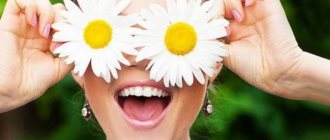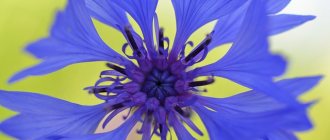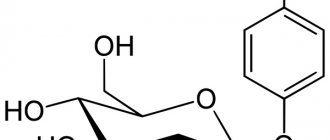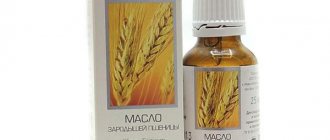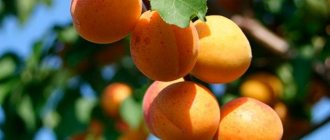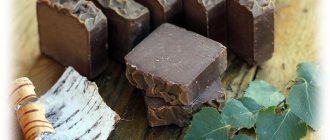In Korea, traditions are highly respected. Thanks to this, ancient knowledge is successfully used in modern medicine and cosmetology. One striking example is Korean ginseng (insam). It is considered the most healing and valuable of all plants growing on the planet. The magical plant has a rich history and a huge list of beneficial properties. Ginseng root is used in anti-aging facial cosmetics, which is wildly popular not only in Asia, but throughout the world. Why ginseng is so useful, and which remedy with a miraculous extract to choose, we will tell you in our article.
A little history
The plant was first mentioned in the first century BC. Korean ginseng was already considered an extremely valuable extract, beneficial for health and prolonging life. The royals were really hunting for him. In the 16th century, it was recognized as rare and was forbidden to be consumed by everyone except the emperor and his family. The main consumer of the plant has always been China. During the reign of the Chinese Empire, Korea even paid tribute in valuable roots. In modern Asia, ginseng is grown on an industrial scale and is used not only as a medicine, but also added to everyday food.
Characteristics of the properties of the Chinese root
The healing root has found its use in cosmetology due to the content of a large amount of substances valuable to the body. The high content of folic acid, minerals and microcomponents, as well as vitamins B, E, C, nicotinic acid compounds, panaxinol promotes rapid regeneration of skin cells.
The ability to improve the regeneration of the cellular apparatus is widely used for cosmetic purposes. Dull, brittle strands become strong and silky in a short time. Fading facial skin with wrinkles is quickly smoothed out, the upper layer of the dermis is renewed. Due to these qualities, a person looks much younger than his age.
Why is ginseng root considered especially valuable?
It's all about the climate. The plant develops in ideal weather conditions: when one season of the year is replaced by another without delay. The ripening period of ginseng lasts about six months, much longer than that of Chinese ginseng.
Types of Korean Ginseng
Let's tell you a secret. In fact, there is only one plant, and it is divided into types according to the method of processing.
- “Live” ginseng is the fresh root of the plant (up to 4 years), subject to minimal drying in the open air.
- Korean white ginseng (4-6 years) - it is dried after first peeling it and the place for drying is chosen so that direct sunlight does not fall on the plant. During the process, the shape of the root changes; the longer the plant is dehydrated, the more bizarre it looks.
- Korean red ginseng (over 6 years old) - it can be found more often than other types in everyday life. And he is also the most useful. Thanks to steam treatment, during which it acquires a reddish tint, all useful microelements are preserved as much as possible.
- Fresh ginseng root treated with water. Immediately after harvesting, the roots are cleaned with ultrasonic water jets. After this, they can already be used in the production of various products.
Properties of ginseng
Ginseng has a protective function against the effects of ultraviolet radiation. It is used for damaged skin as a bactericidal healing drug. Reduces swelling, inhibits tissue inflammation.
In the form of a tincture, it is used to improve well-being, memory, resistance to stressful situations, and endurance of the body. Hair tinctures are widely used by cosmetologists to treat alopecia - focal destruction of hair follicles.
The root has a special foaming property. In pharmaceutical establishments on the counter you can see shampoos, balms, and cosmetic milk based on ginseng root.
Ginseng: benefits and applications
Ginseng is beneficial for the face due to its high content of saponins. These are complex organic compounds from plant glycosides. They have a powerful regenerating and anti-inflammatory effect, ensure complete metabolism and energy balance of skin cells. Simply put, ginseng extract for the face actively resists aging, reduces inflammatory processes occurring in the skin, and protects the epidermis from the adverse effects of the environment.
Useful properties of ginseng:
- Helps smooth out wrinkles
- Well moisturizes and nourishes
- Relieves inflammation
- Powerful antioxidant
- Tones
- Increases elasticity
- Strengthens the walls of blood vessels
- Protects against external factors and photoaging
- Gives radiance to the skin
Korean red ginseng is most often found in cosmetics. It is added to cleansers, tonics, serums, face and eye creams, masks, patches, shampoos and balms. Korean anti-aging lines with valuable extract are very popular.
Rosacea Alert: 9 Skin Care Mistakes
September 25, 2022
Rosacea refers to a skin disease that is characterized by hyperemia, dilation of small and superficial vessels on the face, and the formation of papules and pustules. Unfortunately, this disease is very common and often it is chronic. That is why it is very important to properly care for your skin to avoid relapses.
Cosmetologist Maya Valerievna Samoilova talks about the most common mistakes in caring for skin with rosacea.
First mistake: Using micellar water for cleansing without subsequent washing.
It would seem, what is the mistake? After all, manufacturers strongly recommend that we use micellar water. But mass-market cosmetics do not always work as advertised. Almost all micellar water contains surfactants (surfactants). By leaving them on the skin, you damage its limit barrier. And this leads to worsening symptoms of dryness. What is strictly unacceptable for skin with rosacea. After cleansing with micellar water, it is necessary to wash your face and then wipe your face with toner, and only then apply the main care product.
Mistake two: Using creams with hyaluronic acid.
Why is this harmful? After all, everyone says that HA is a great moisturizer. Yes, that’s right, but it doesn’t work like that in creams! This is too large a molecule and it does not penetrate the epidermis through the cream, but lies on the surface of the skin like a plank, which can aggravate inflammatory processes. It is better to give preference to moisturizing and nourishing creams with herbal ingredients, vitamins, ceramides, and lipids.
Error three: Using chemical peels and scrubs with abrasive particles.
Any mechanical impact and microburns with acids will provoke inflammation and vascular growth! In addition, it will disrupt the skin's barrier functions and worsen all rosacea symptoms. Therefore, these procedures are prohibited. There are some exceptions to peelings, but it is best to consult a cosmetologist about this.
Mistake four: Washing with hot tap water.
It is clear that this causes vasodilation and damage to the fragile lyrical barrier of the skin. Moreover, the water in our homes is very hard in structure. Therefore, you need to wash your face with warm water. And then be sure to use a tonic to normalize the pH.
Mistake #5: Regularly rubbing your face with ice cubes.
Rosacea does not like extreme temperatures. And the hyperemia after an ice shower will be long-lasting.
Error six: Aggressive cosmetic procedures for exacerbation of rosacea.
They absolutely cannot be done, as they injure the surface of the skin. Such manipulations include laser resurfacing, classical biorevitalization, chemical peelings, radio frequency lifting.
Error seven: Taking vasoconstrictor medications and vitamins for rosacea.
With this disease, this is simply a useless action! Indeed, the pathogenesis of rosacea is the proliferation of capillary endothelium in the facial area, and not the weakness of the vascular wall. But diseases of the cardiovascular system, endocrine system, and gastrointestinal tract must be treated.
Error eight: Abuse of decorative cosmetics and creams with fragrances.
Decorative cosmetics and creams that “smell delicious” contain a large number of preservatives and allergens. Be sure to read the ingredients on the packaging. As a rule, they are arranged in descending order of active ingredients. And if you saw the name “phenoxyethanol” in the middle of the composition, that’s a lot! Dyes are always named by a Latin abbreviation. And fragrances are like parfum.
Mistake nine: Love of tanning.
This habit is simply killer for skin with rosacea. Despite the apparent improvement in the appearance of the skin after tanning, there will always be an exacerbation later. If possible, it is better to completely avoid sunbathing.
How to prepare the tincture?
Peel the fresh product from the top layer, cut into small circles. Place the drying agent on thick paper or cardboard. When the root dries, pour it with an alcoholic drink (at least 400) in a ratio of one to ten:
Ginseng – 10 g Alcohol – 100 ml
Immerse the contents in a glass container. Leave for 30 – 60 days in a cool, dark place. Stir the tincture regularly with a stick. Avoid contact of liquid with metal objects.
Who should not use golden root?
Not every panacea can have a positive effect for certain groups of people. For whom is the life-giving power of the healing extract inaccessible? Ginseng is contraindicated:
Persons with high blood pressure (especially in the summer months). Diagnosed with hyperthyroidism (dysfunction of the thyroid glands). During pregnancy. When breastfeeding. Persons suffering from migraine, frequent headaches of unknown etiology. For sleep disorders. The effect of the extract and tincture is increased by frequent consumption of alcoholic beverages, coffee, and strong tea. Individual intolerance.
Ginseng infusion
An infusion of the root is used for poor skin tolerance to alcohol. Sometimes the skin of the head or face is very susceptible to external influences, and an allergic reaction may appear in the form of rashes, swelling, and peeling. In this case, use an infusion of the root without alcohol.
Preparation:
Ginseng powder – 70 g Water – 250 ml
Heat water to boiling point, pour powder into it. Cover the container with a terry towel. After two hours, strain the infusion through 2 - 3 layers of gauze. Pour the prepared broth into a clean container.
Making cosmetics from ginseng at home: what do you need to know?
The effectiveness of using the root depends on its preparation method.
If it is not possible to purchase a fresh product, you can use extracts, tinctures, oils, the addition of which to cosmetic products also has a positive result.
The final outcome of treatment depends on the degree of damage to the intended area that will be affected. Hair will not grow back after one use of a mask with ginseng, and your face will not rejuvenate after a couple of therapy sessions. To achieve maximum effect, you need to regularly use the life-giving power of the root.
At home, you can dry the root (then use powder), make an alcohol tincture (the optimal alcoholic strength is 400), or a tincture without alcohol. The resulting ingredients are added to shampoos, masks, and balms.

